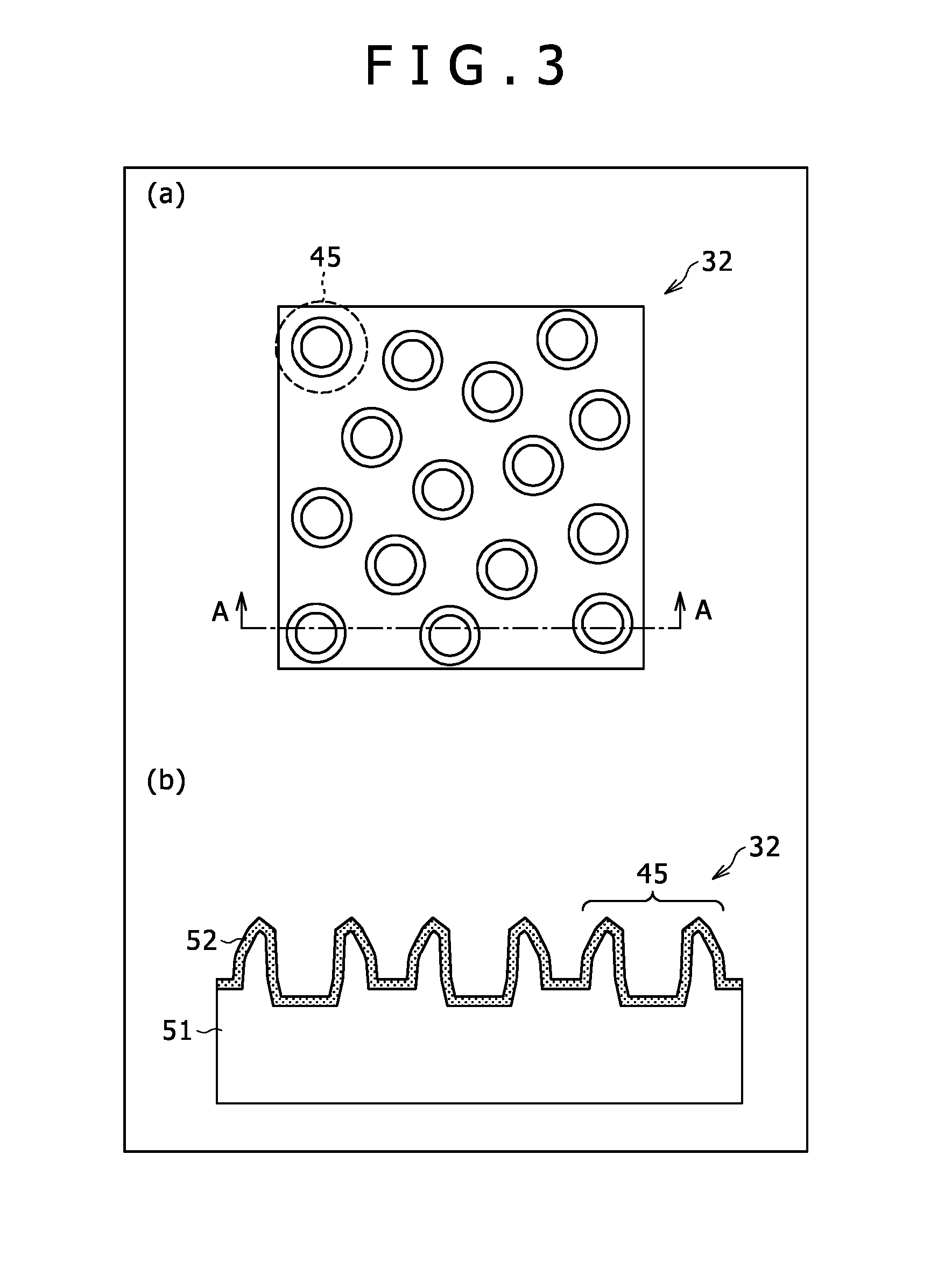Structure, chip for localized surface plasmon resonance sensor, localized surface plasmon resonance sensor, and fabricating methods therefor
a technology of localized surface plasmon and chip, applied in the direction of instruments, nuclear engineering, transportation and packaging, etc., can solve the problems of complex optical system of the sensor, large size, difficulty in making a sensor that is small in signal-to-noise ratio (s/n ratio) and high sensitivity, and large size of the apparatus, etc., to achieve enhanced raman scattering, high sensitivity, and high sensitivity
- Summary
- Abstract
- Description
- Claims
- Application Information
AI Technical Summary
Benefits of technology
Problems solved by technology
Method used
Image
Examples
example 1
Structure Fabrication-1
[0229]Such POT1 as indicated before was used as a light responsive material and a thin film of this azo polymer derivative (thickness: 100 nm) was formed on a glass substrate according to a spin coating method.
[0230]The azo polymer derivative thin film thus formed was annealed (at 150° C. for 10 minutes (normal pressure)).
[0231]1 cc of pure water was dropped over the azo polymer derivative thin film, followed by irradiation with light of a wavelength of 470 nm at an intensity of 40 mW / cm2 for five minutes.
[0232]After the irradiation, pure water was removed and the azo polymer derivative thin film after the light irradiation was air-dried, followed by observation of the surface with AFM. The results are shown in FIG. 5.
[0233]Tubular bodies of the resulting structure had an average diameter of 690 nm and a depth (average value) of 180 nm, a ratio (A / B) of inner diameter A of the openings of the tubular bodies and inner diameter B at the midpoint of the depth fro...
example 2
Structure Fabrication-2
[0236]Such an azo polymer derivative POT1 as used in Example 1 was provided as a light responsive material and coated onto a transparent substrate in a thickness of 50 nm by means of a spin coater to form an azo polymer derivative thin film.
[0237]The azo polymer derivative thin film thus formed was annealed (at 150° C. for 10 minutes (at a normal pressure)).
[0238]1 cc of pure water was dropped over the azo polymer derivative thin film and irradiated with light of a wavelength of 470 nm at an intensity of 30 mW / cm2 for five minutes.
[0239]After the irradiation, the pure water was removed and the azo polymer derivative thin film after the light irradiation was air-dried, followed by observation of the surface with AFM. The results are shown in FIG. 7.
[0240]The tubular bodies of the resulting structure had an average diameter of 350 nm and a depth (average value) of 170 nm, and a ratio (A / B) of inner diameter A of the openings of the tubular bodies and inner diame...
example 3
Structure Fabrication-3
[0242]Structures were made in the same manner as in Example 2. Of the thus formed structures, arbitrarily chosen four structures were subjected to profile measurement (Experiment Lot No. 302-1).
[0243]The procedure of Experiment Lot No. 302-1 was repeated except that after annealing (at 150° C. for 10 minutes (at a normal pressure)) prior to light irradiation, samples were allowed to stand at room temperature for 12 hours. Among the structures formed in this manner, arbitrarily chosen two structures were subjected to profile measurement (Experiment Lot No. 303-1).
[0244]These results are shown in Table 1.
TABLE 1Experiment Lot No.302-1303-1Tubular body No.123456Thickness of5050azobenzenepolymerthin film (nm)Inner450469410371371371diameter A ofopeningsof tubularbodies (nm)Inner352390273313273234diameter B atthe midpoint ofthe depth fromopenings oftubularbodies (nm)Depth (nm)185217200199194164A / B1.281.201.501.191.361.59
[0245]The invention should not be construed as...
PUM
| Property | Measurement | Unit |
|---|---|---|
| Thickness | aaaaa | aaaaa |
| Thickness | aaaaa | aaaaa |
| Length | aaaaa | aaaaa |
Abstract
Description
Claims
Application Information
 Login to View More
Login to View More - R&D
- Intellectual Property
- Life Sciences
- Materials
- Tech Scout
- Unparalleled Data Quality
- Higher Quality Content
- 60% Fewer Hallucinations
Browse by: Latest US Patents, China's latest patents, Technical Efficacy Thesaurus, Application Domain, Technology Topic, Popular Technical Reports.
© 2025 PatSnap. All rights reserved.Legal|Privacy policy|Modern Slavery Act Transparency Statement|Sitemap|About US| Contact US: help@patsnap.com



